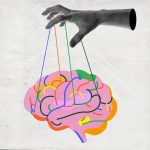Developing assessments that are fair and equitable for all students can be a complex and challenging task. Standardized tests and assessments can be culturally biased, meaning that they may reflect the values, experiences, and knowledge of certain cultural groups more than others. This can lead to lower scores and unfair outcomes for students from certain cultural or linguistic backgrounds.
Some students may have disabilities or special needs that make it difficult for them to access traditional assessments. Providing accommodations and alternative assessment formats can be a challenge and ensuring that these accommodations do not compromise the validity and reliability of the assessment can be difficult.
Students who are English language learners (ELLs) may struggle with assessments that are not designed to accommodate their language needs. This can lead to lower scores and unfair outcomes for these students.
A NCES report found that 79% of U.S. schools use state-standardised tests to measure student achievement, while 63% use district-wide assessments.

Here are some trends and developments that may shape the future of assessment:
- Personalized assessment involves tailoring them to meet the individual needs of students. In the future, we may see more assessments that are designed to be adaptive, and that will adjust to the student’s level of knowledge and skills. This can ensure that students are challenged at an appropriate level and can help to close learning gaps.
- Performance-based assessments involve measuring a student’s ability to apply their knowledge and skills to real-world problems or tasks. In the future, we may see more performance-based assessments that focus on skills such as collaboration, critical thinking, and problem-solving.
- Digital assessment involves using technology to administer and score assessments. It is highly realistic that we may see more digital assessments that incorporate multimedia elements, such as videos and images, and that provide immediate feedback to students and teachers.
- Social and emotional assessment involves measuring a student’s ability to manage their emotions, build positive relationships, and make responsible decisions. Over time, we may begin to see more assessment-related content focusing on social and emotional learning, as schools and educators recognize the importance of these skills for student success.
Fair and Equal Assessments
As assessment becomes a key focus, we may begin to see an increase in developing appropriate and equitable assessments that are fair for all students. This may involve incorporating culturally responsive elements, such as diverse examples and perspectives, and reducing bias in assessment items.
Some students may also experience test anxiety, which can impact their performance. Addressing test anxiety and providing support for students to manage this anxiety can be a challenge.
Developing assessments that are fair and equitable for all students can require significant resources, including time, funding, and expertise. Schools and districts with limited resources may struggle to provide the necessary support and accommodations to ensure that assessments are fair and equitable for all students.
Ensuring that assessments are valid and reliable is critical to highlighting that they are fair and equitable for all students. Developing assessments that meet these standards can be a challenge and ensuring that they are properly aligned with academic standards and curriculum can be difficult.
Future assessments
Addressing these challenges requires a collaborative effort from educators, policymakers, and other stakeholders. It is important to consider the diverse needs and experiences of all students when developing assessments and to ensure that assessments are designed to promote student learning and growth, rather than simply measuring student performance.
Overall, the future of assessment will likely involve a continued focus on developing them to become fair, valid, and reliable, while also incorporating new technologies and strategies to better meet the needs of students and teachers.









